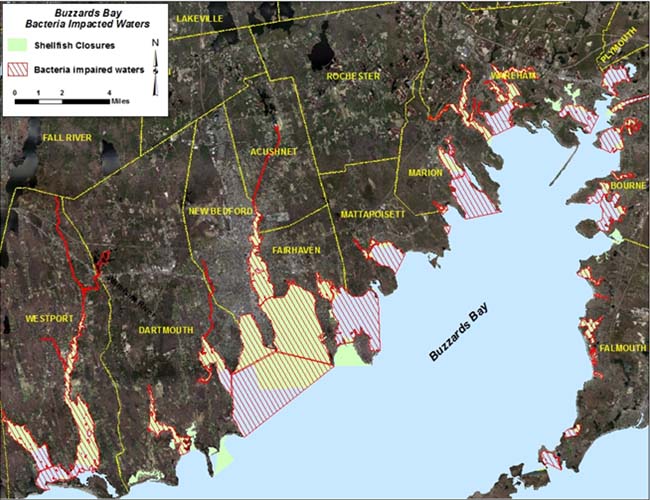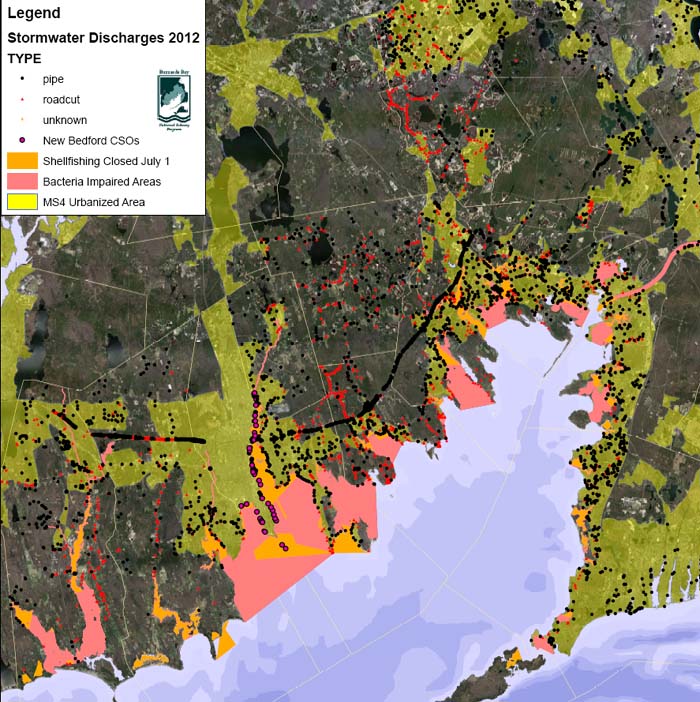
Buzzards Bay Stormwater Collaborative: Goals

Fig. 1. Waters of Buzzards bay impaired by bacteria pollution.

Fig. 2. Since 2003, we have mapped more than 3000 discharges near the coast of Buzzards Bay.
Scope of the Problem
In Buzzards Bay, there are roughly 6,000 acres of shellfish growing areas indefinitely closed to shellfishing, another 6,000 acres closed after 0.2 inches or more of rain, and roughly 3,000 acres seasonally closed (Fig. 1). Some of these closures are mandatory prohibitions around sewage facility outfalls, and some are precautionary closures around marinas or dense mooring areas. However, a large portion of these closures are the result of bacterial contamination from stormwater discharges (Fig. 2). Some of these stormwater discharges also contribute nutrients to these embayments, many of which are nitrogen impaired and require that a nitrogen TMDL be met. The elimination of illicit discharges to stormwater networks and the treatment of stormwater discharges conveying non-point sources of pollution will help reduce these impairments. While many of these discharges are now regulated under a federal MS4 stormwater issued to municipalities, some are not regulated. An important goal of the Buzzards Bay Stormwater Collaborative is to identify and prioritize for remediation those stormwater discharges that are the most significant contributors to water quality impairments.
Goals of the Program
The identification of problem discharges and the development of solutions must begin with monitoring stormwater discharges and mapping stormwater networks for nutrients and bacteria. The Buzzards Bay Stormwater Collaborative, now managed through the Massachusetts Maritime Academy, is helping identify problem stormwater discharges, identify pollution sources, and gather the kinds of information necessary to prioritize action to reduce stormwater pollution and ultimately re-open shellfish beds.
Late in 2019, the SNEP program awarded a grant to continue the Buzzards Bay Stormwater Collaborative through the end of 2020. This grant will allow the eight municipalities within the Collaborative to expand the geographic extent of testing stormwater discharges. The initiative will involve participation from the public works departments in the Towns of Acushnet, Bourne, Dartmouth, Fairhaven, Marion, Mattapoisett, Wareham, and Westport. The Buzzards Bay National Estuary Program is providing technical assistance to Massachusetts Maritime Academy and the Stormwater Collaborative in implementing the effort. The NEP also manages the stormwater database and GIS for the effort.